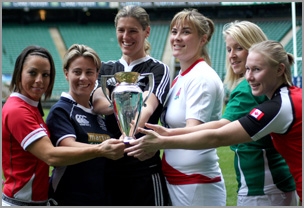The World Cup system explained
By John Bich
Published by Alison Donnelly, November 28, 2009
5 minute read

The 2010 World Cup received its official launch on 23rd November. A well managed event that received good media coverage, but also for the first time told us how next years tournament will work.
This was important as in the past IRB Womens World Cups have been anything but simple for the spectator to follow. There had been little clarity during previous competitions and at the 2006 tournament an otherwise well organised event - it almost required an advanced degree in mathematics and probability theory from anyone attempting to follow its opening stages.
It was therefore welcome news to hear that the IRB have gone for three totally conventional four-team round-robin pools for next years event. Unfortunately this is as far as simplicity can go as the decision on restricting the tournament to only 12 teams (the 1994 and 1998 tournaments both had 16) meant that they needed to find a way to produce four semi-final teams from three pools.
Their solution is to pair the best performing pool winner (based on tournament points and try count) with the best performing pool runner-up in one semi-final, while the other two pool winners play in the second game. The other pool runners-up and the best two third placed teams will play off for 5th to 8th place, and the remaining teams compete for 9th to 12th place.
There are a number of consequences from this. First, it is possible (though, admittedly, unlikely) that England and New Zealand could meet in the semi-finals. What is more likely is that one of the semi-finals will be a repeat of one of the pool games which is what happened when a similar system was used in the African Sevens World Cup qualifier.
It is also unlikely that any pool runner-up will win clearly more tournament points than the others, so every try in every game will matter with each team aiming to score as many tries as humanly possible, which (apart from anything else) will make the team selection and tactics interesting. There will be no question of a team relaxing just because they are already 50 points ahead (or even behind!), unless they are not totally confident of winning their pool (which means anyone other than England or New Zealand). How would it feel to lose out on a semi-final place because you scored 15 tries, and then chose to rest key players, while in another group another team went for broke and scored 16?
Equally every bonus point for tries scored, or for a defeat by less than 7 points will be incredibly vital. Losing a game by six points instead of seven might be the difference between a semi-final at the Stoop in front of live worldwide TV audience and up to 14,000 spectators or staying at Guildford for a 5th place play-off in front of some friends and family.
This also makes the order pool matches are to be played significant, especially in the final round. Teams in Pool B (England, Ireland, USA and Kazakhstan) will play their final round of games last, and will therefore know exactly what they will need to do - how many tries they need to score to qualify for the best seeding. On the other hand those in Pool C (France, Canada, Scotland and Sweden) will play their games first then have to wait an agonising three or four hours before learning their fate.
Watching the qualifying stages for next years world cup is therefore likely to require access to a decent pocket calculator - but one thing can be guaranteed. If you are looking for high emotion, tension-filled, attacking rugby, or if you just like watching sports coaches in various states of mental agony, Guildford will be the place to be next August!
.